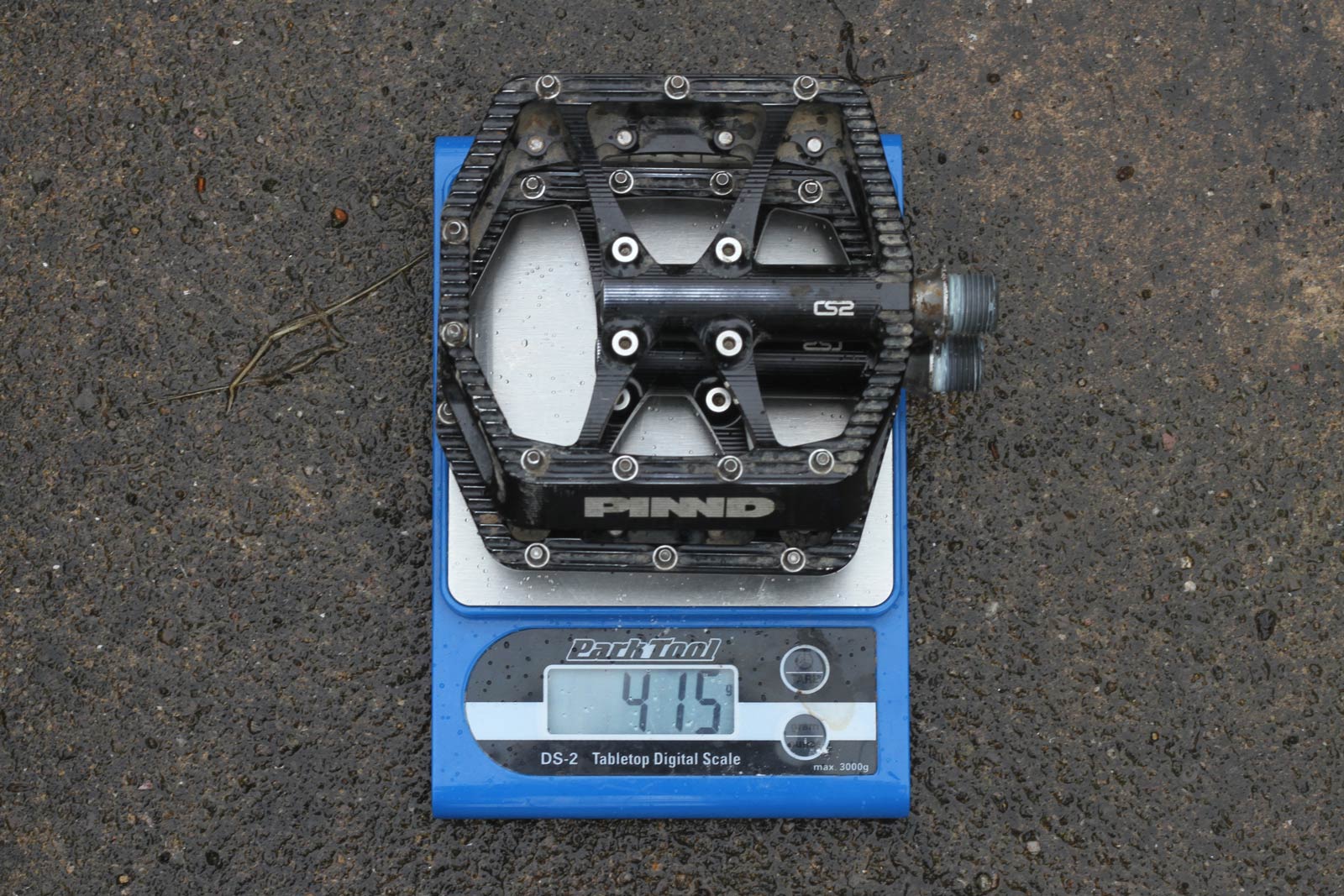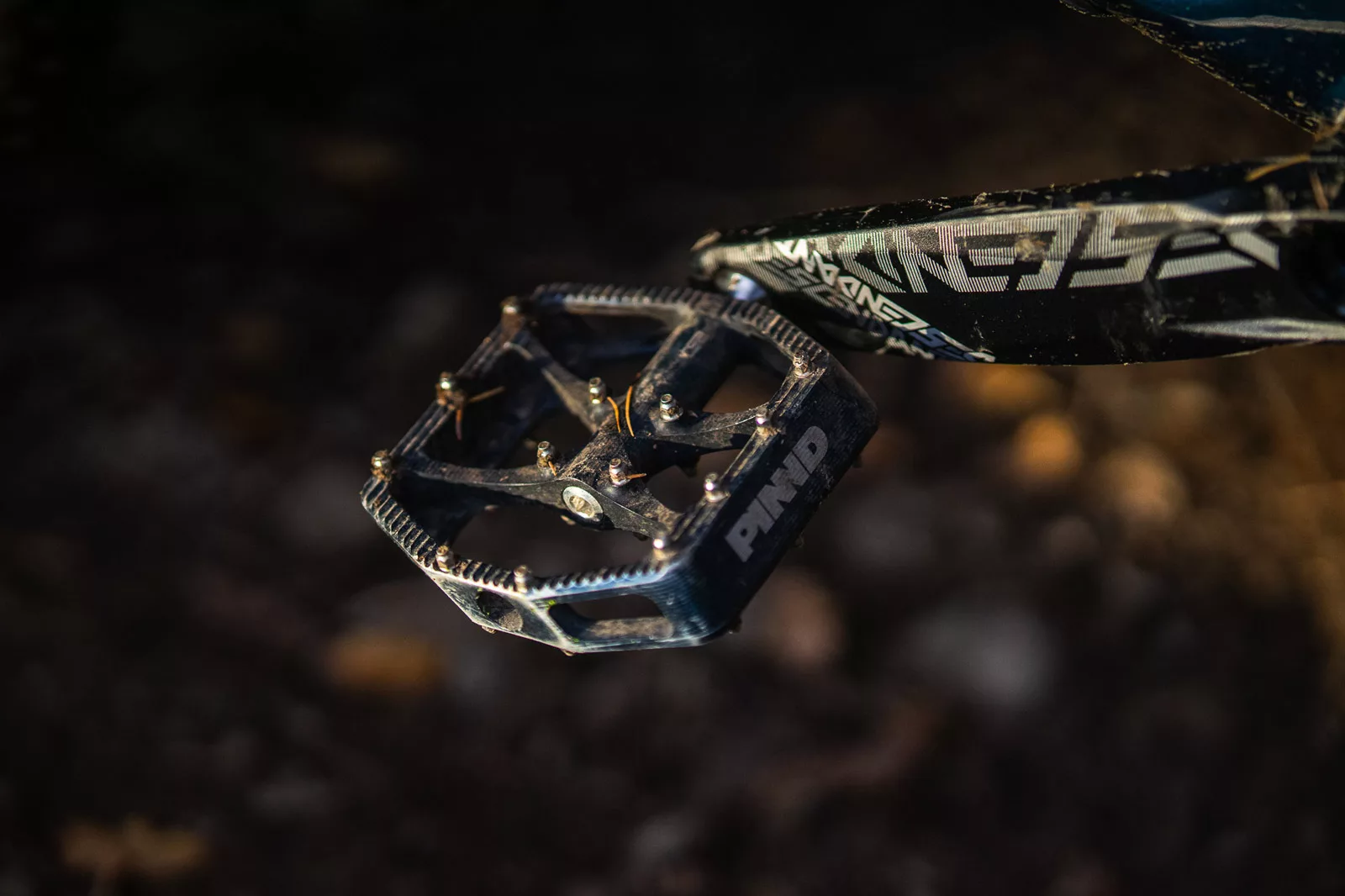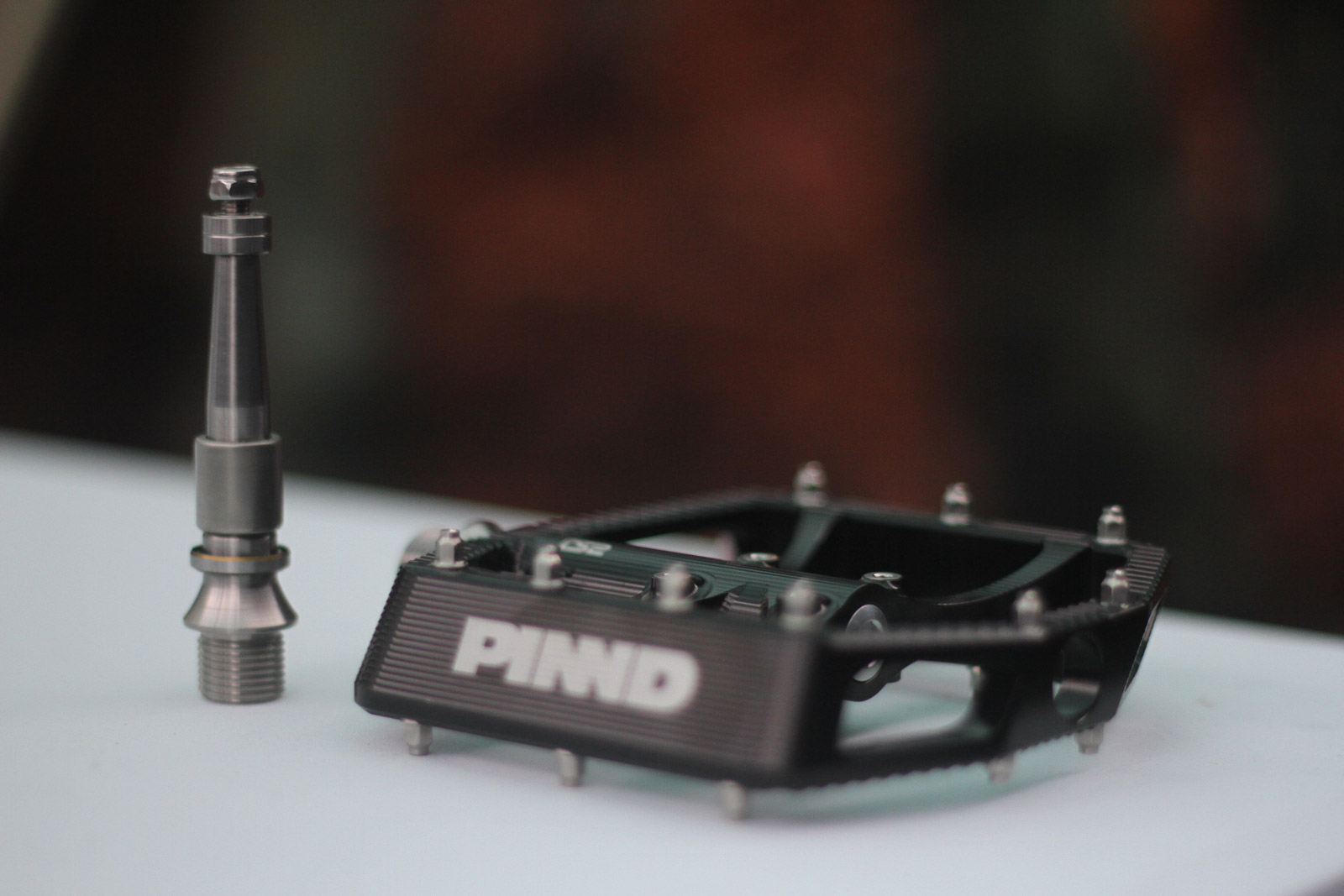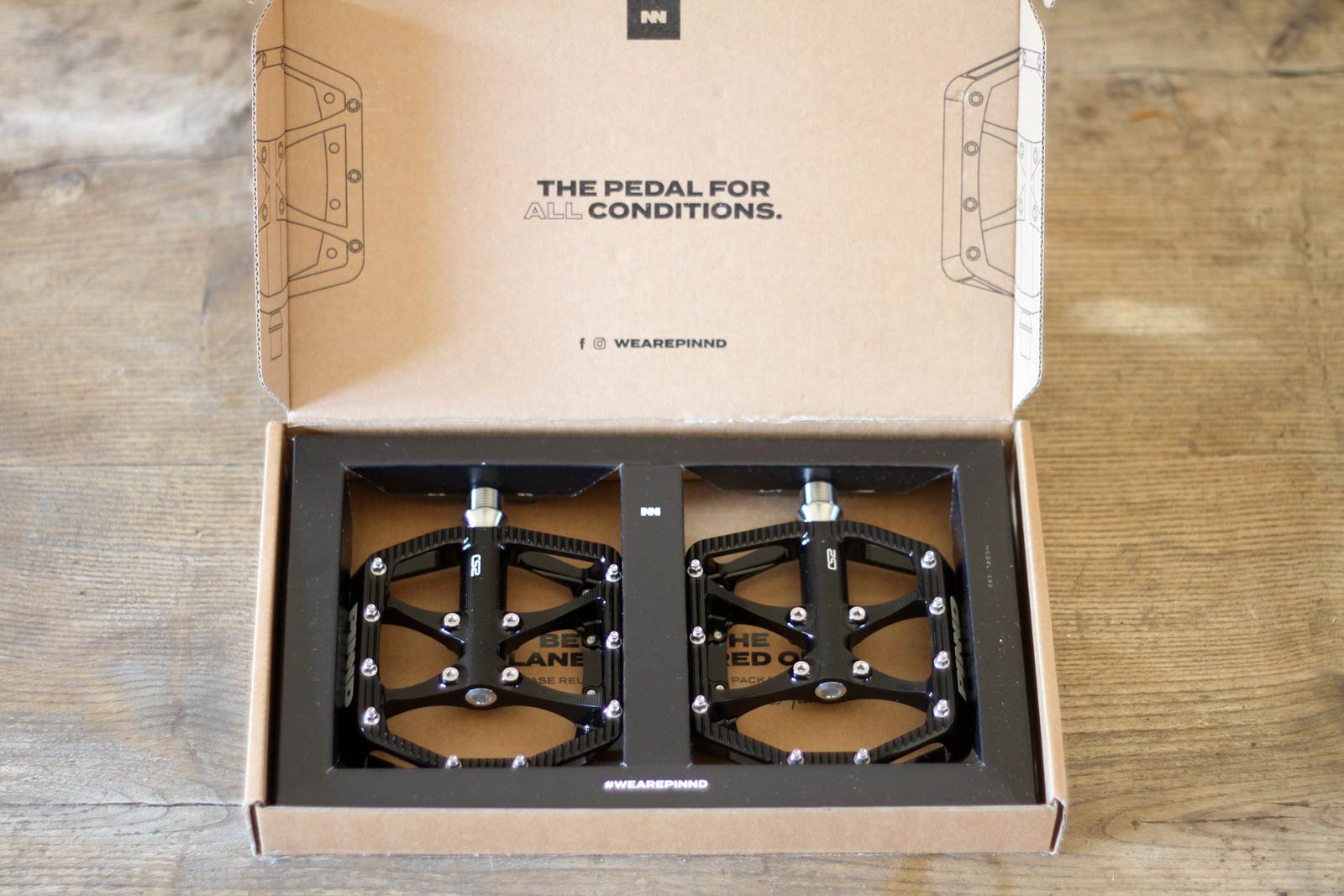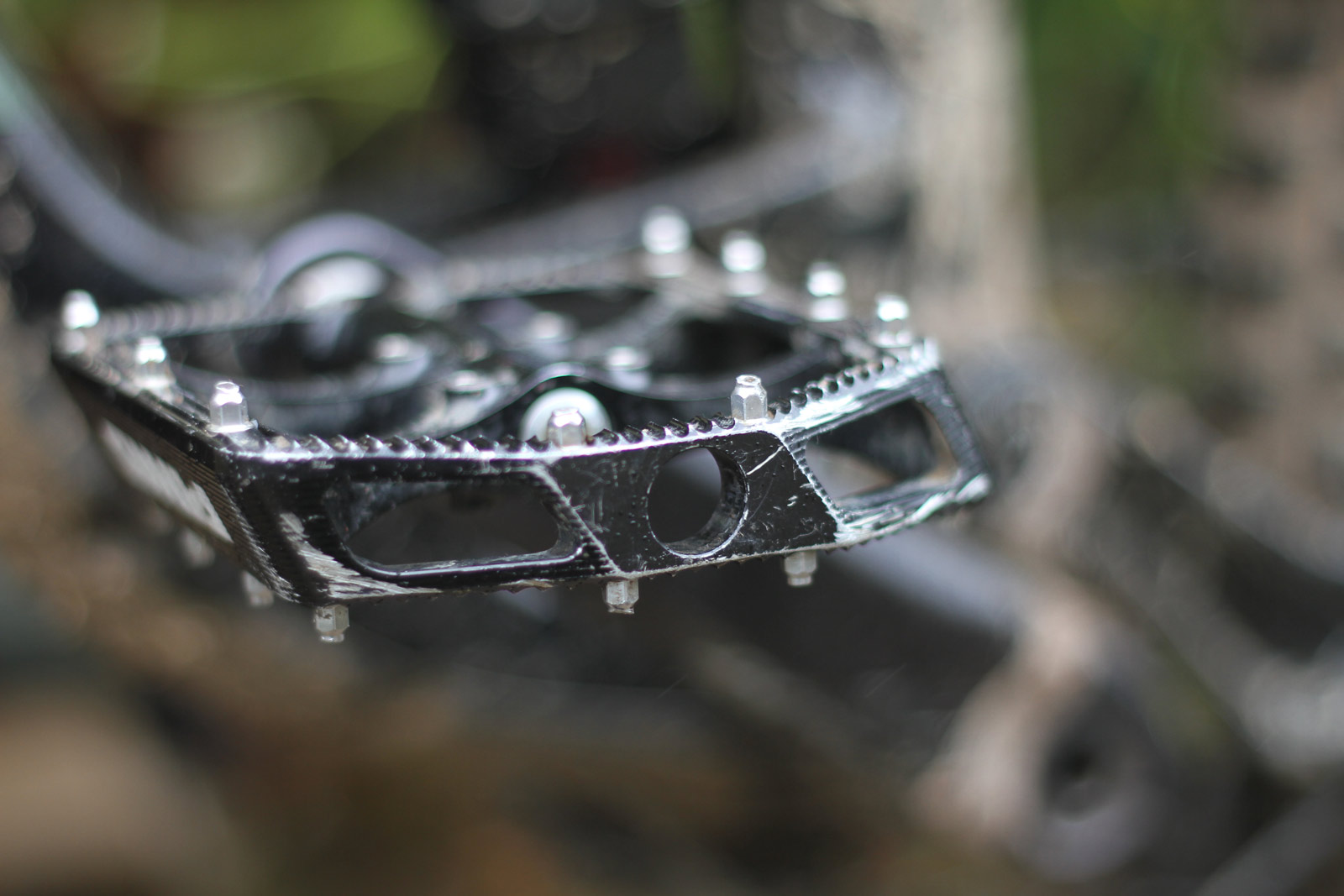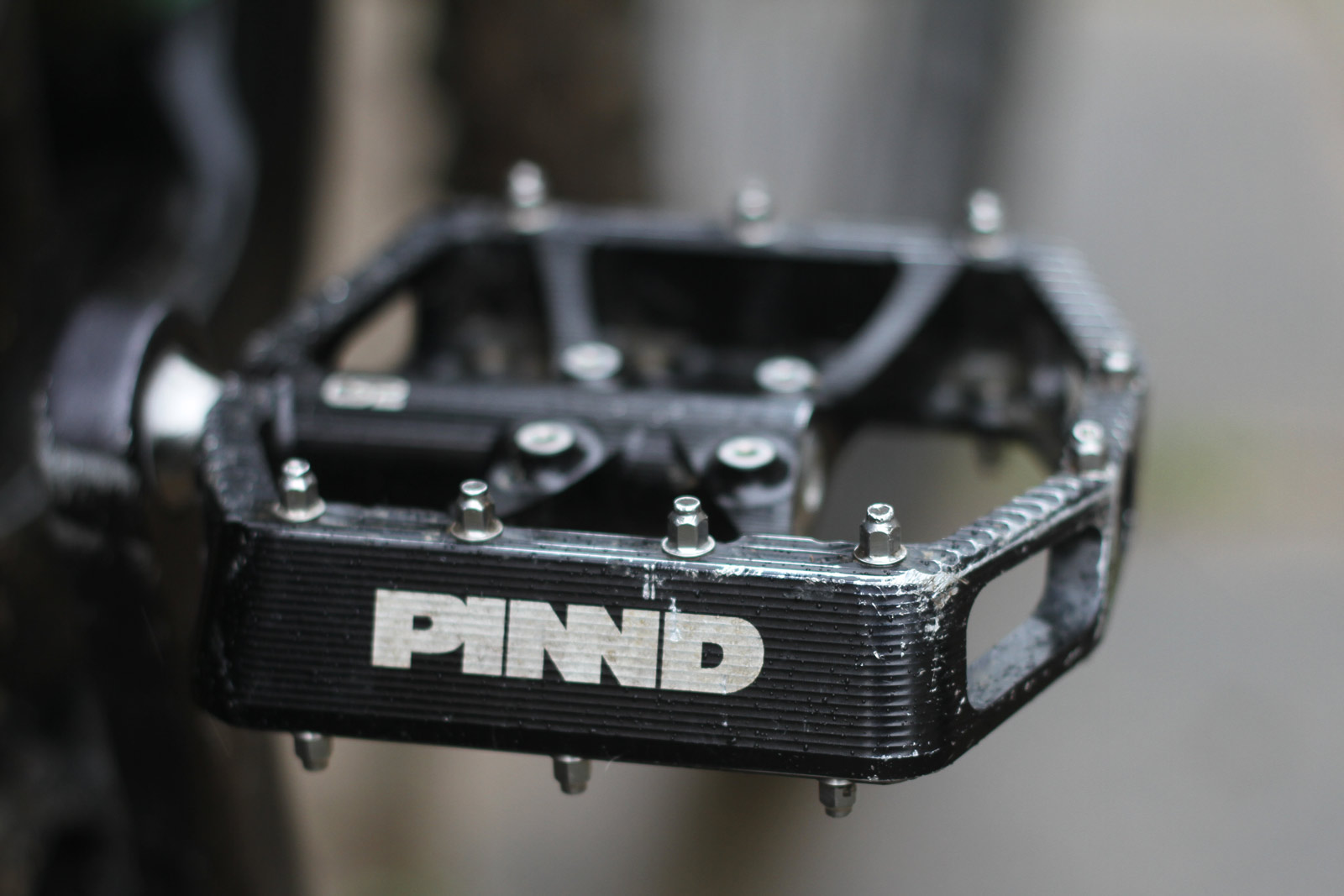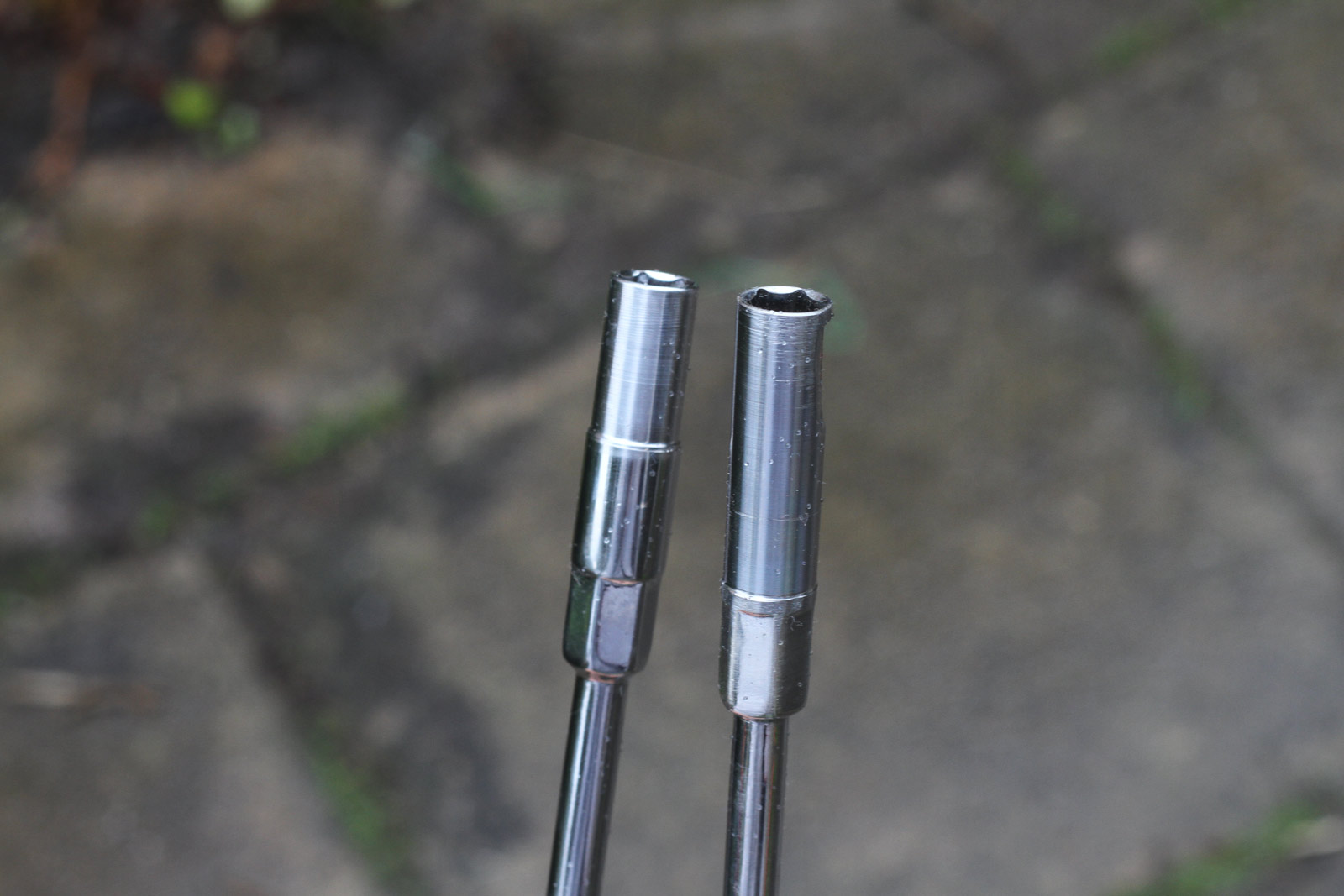At the 2021 Tweed Valley EWS, new componentry brand PINND announced their arrival with the launch of their debut product, the £195 CS2 Flat Pedals. While that price is rather difficult to stomach, the brand are setting themselves apart from competitors with bold claims on the pedals’ strength and longevity, backing them up with a 5-Year Warranty Policy.
Unlike some competitors’ Ti Axle-rocking flat pedals, these have no maximum rider weight limit. PINND claim the CS2 pedal will last a very long time, with long service intervals thanks to the oil sealed internals. Those consist of a titanium axle, two cartridge bearings and a needle bearing in place of the regular DU Bush you will find in most other pedals on the market. The idea there is that the needle bearing won’t wear out quite so quickly, leading to the axial play that invariably develops in pedals running a plastic bush. Now, you can start to see where the money is being spent. Another reason for that premium price point is the fact these are designed and manufactured in Scotland.
The PINND CS2 Pedal is marketed as “the pedal for all conditions”. Here in Scotland, the weather is quite capable of delivering four seasons within a matter of 12 hours. So, where better to test the pedals than on the trails they were conceived for?
Review: PINND CS2 Flat Pedals
The PINND CS2 Pedals arrived inside a cardboard box, with no trace of plastic packaging whatsoever. After confirming they were play-free, I fitted them to my enduro bike. I’ve used these pedals almost exclusively since February, having moved them between various long-travel mountain bikes and eBikes in a bid to give them as thorough a testing as possible.
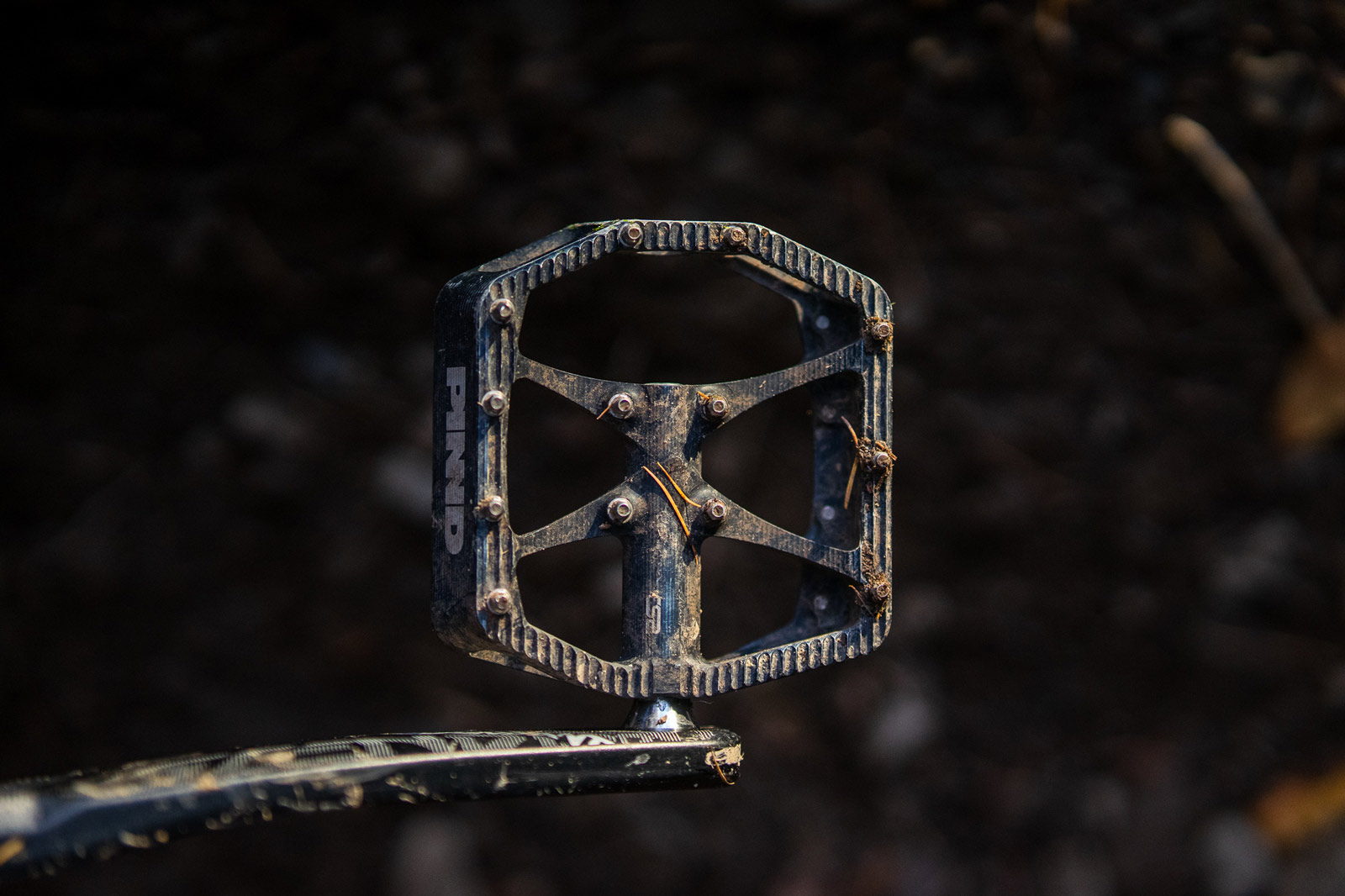
Machined from 7075 T6 aluminium on PINND’s in-house 5-axis CNC machine, the CS2 offers a reasonably large platform, measuring up at 110mm wide and 105mm long. At 22mm thick, the pedal body is quite chunky, largely to accomodate for the needle bearing that sits on the titanium spindle. Factor in the pins sticking out either side and you have a pedal that is effectively 33mm thick. That’s very thick by modern flat pedal standards, but not totally wild. Still, something to consider for those overly partial to the ill-timed pedal stroke, who prefer to run 175mm or longer crank arms, and ride a bike with a very low bottom bracket, or with sag at more than 30% (you get the idea).
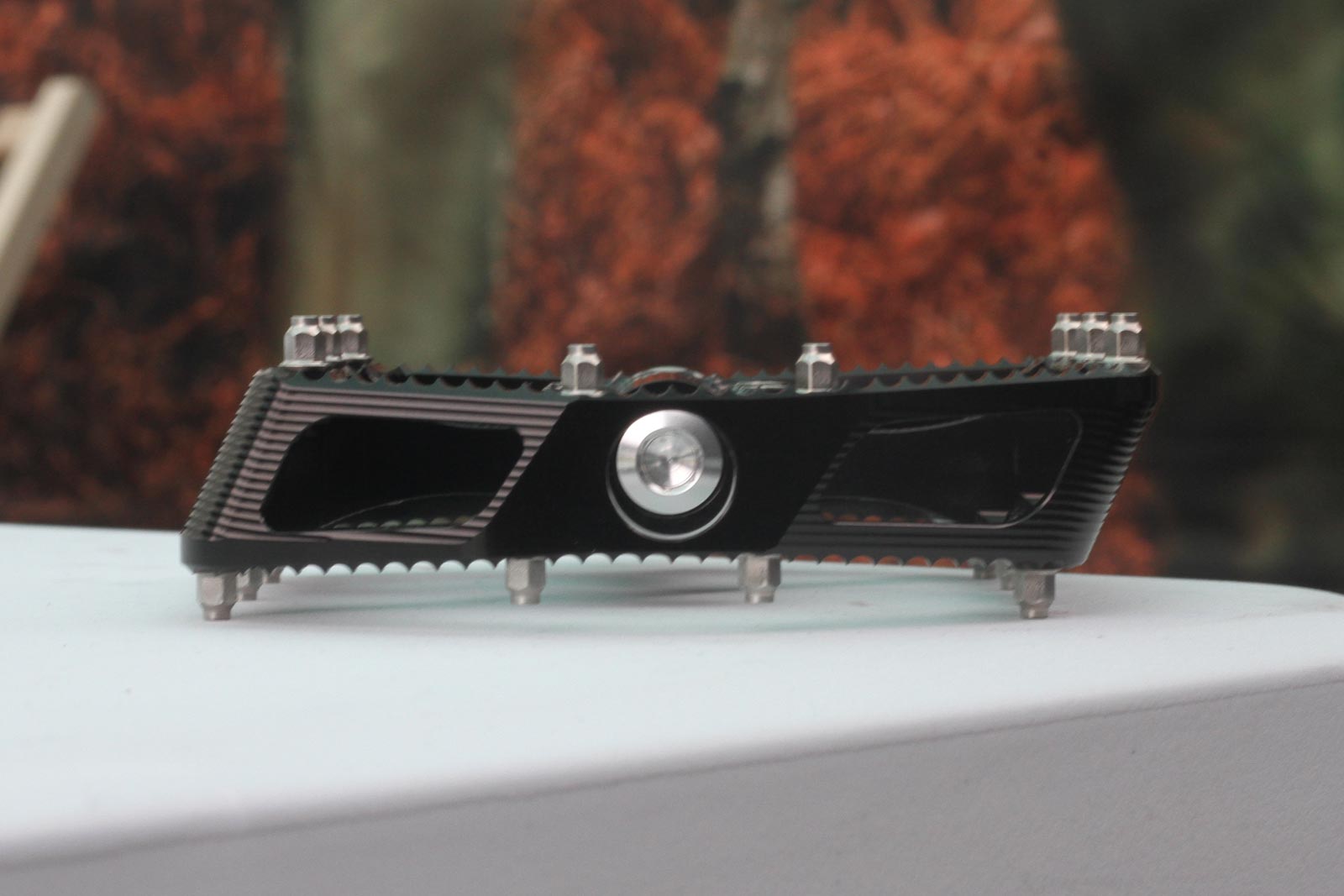
The CS2 Pedal body can accomodate up to 13 pins per side, and that is how they are now shipped, though PINND recommend riders remove the four centrally located pins (replacing them with blanks) in order to make the most of the pedal’s considerable concavity. Accounting for the height of the pins at the front and rear edges, the concavity can be measured as deep as 7.5mm in the central region, but only 2.5mm at the outboard edge given the presence of the two pins located there.
How grippy are the PINND CS2 Pedals?
Very. One of the best. But, I have slightly more nuanced insight than that, if you’re interested.

I wear UK Size 5 shoes, so the wide platform can be slightly wasted on me, depending on which shoe I wear. When wearing more minimalist, casual riding shoes like the Five Ten Sleuth DLX Canvas, my feet have a tendency to settle inboard of those two outboard-most pins. On other, wider shoes like the Specialized RIME, 2FO Roost or the Endura MT500 Burner Flats, all thirteen pins get some action.
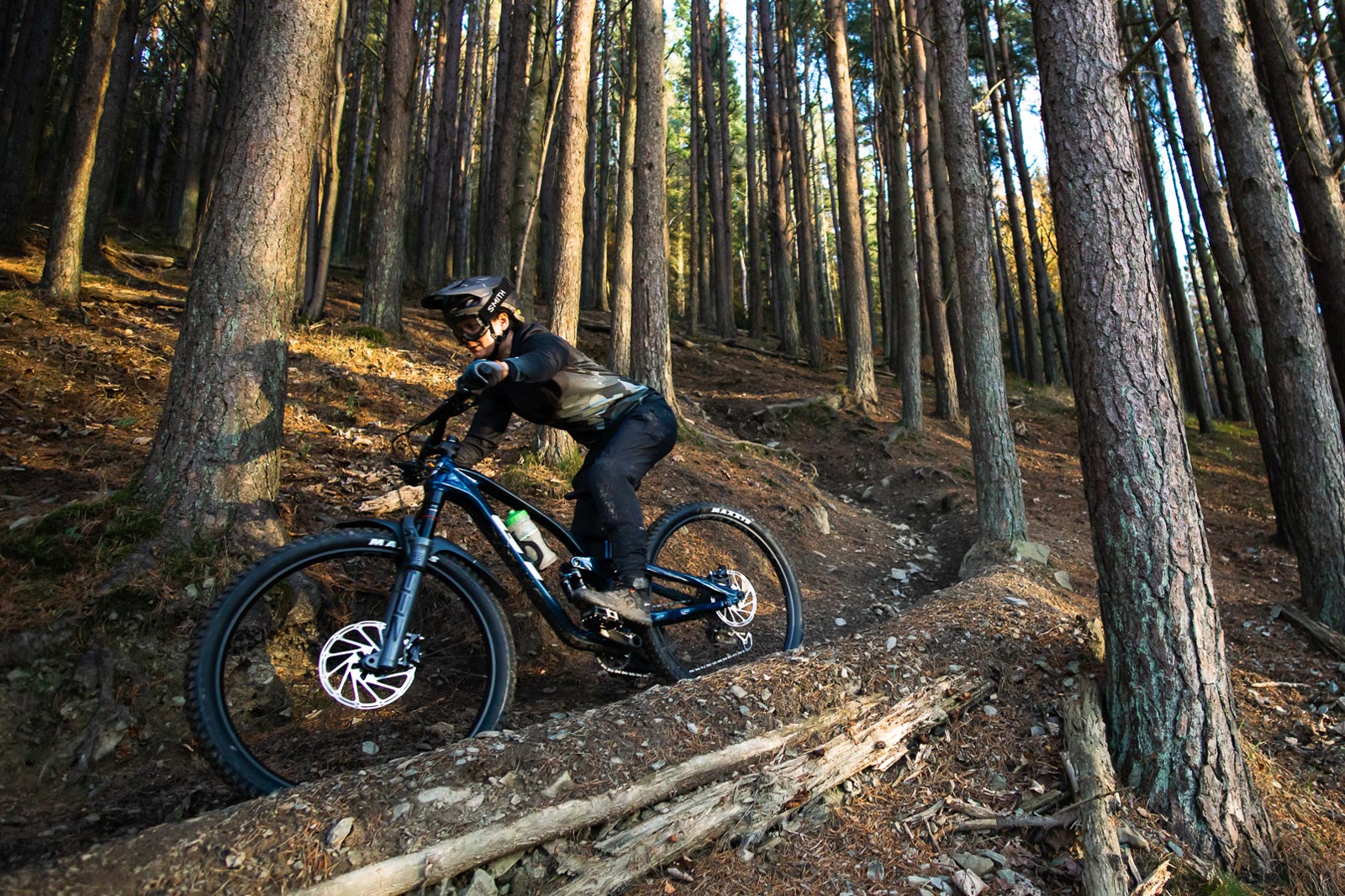
A pedal is only as good as the shoe you pair it with. The considerable concavity of the pedal can only really be appreciated in shoes that allow the wearer’s foot to flex into that concavity. Thus, in stiffer soled shoes like the Endura MT500 Burner Flats, I felt no real benefit to removing the four central pins as the shoe wasn’t allowed to flex in order to fill it. At the opposite end of the spectrum, the Five Ten Sleuth DLX Canvas shoes are so flexible I felt I could almost wrap my toes around the pins at the front edge. That combination probably gave the best foot-pedal connection (and most feedback), but I suspect it wont be too long before the pins actually pierce through the shoe’s sole.
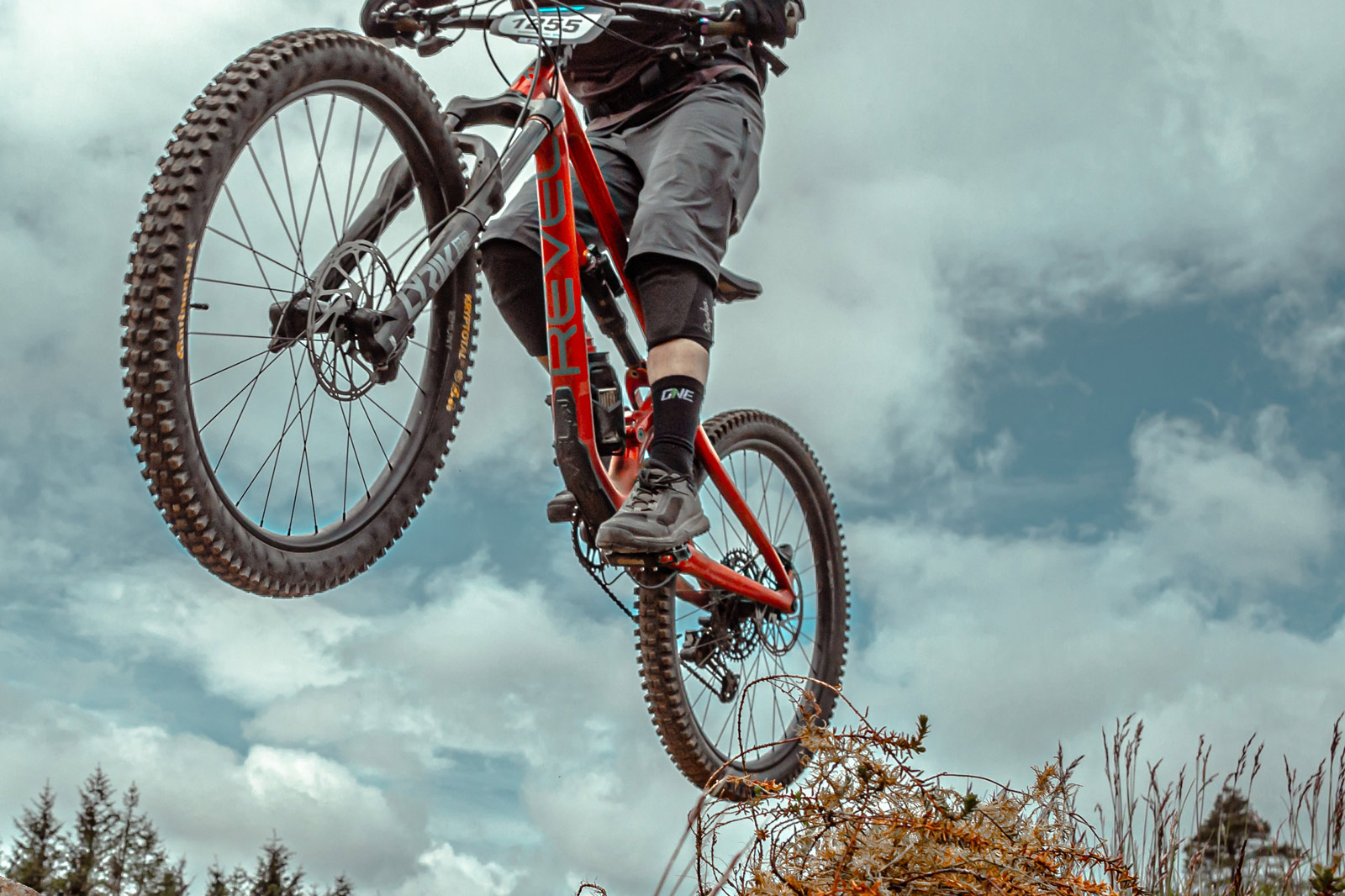
The middle-ground was found with Specialized’s range of flat pedal shoes; the 2FO Roost and the RIME, both of which are sufficiently flexible to make the most of the CS2 pedal’s concavity, and have soles robust enough to cope with the stresses of the pins. I was happy enough with the grip offered by the PINND pedals that I chose to race with them this season. One of their biggest tests would have been at Aberdeenshire’s Transdeeside Enduro, where the longest stage of the day consisted of a near 9-minute bounce down a ridge composed almost entirely of granite rock slabs. My feet remained in an ideal position for the duration. Oh, and I’ve just spent a week riding the braking bump-littered tracks of Morzine, and can recount only one instance of my foot blowing violently off the pedal, which served only as a stark reminder to drop my heels more.
How long did the PINND CS2 Pedals last?
I did smash the PINND CS2 pedals off a good few rocks during the review period; fortunately for me, the pedal glanced off anything it hit with minimal drama thanks the chamfered, angled faces of the CNC’d body. Some of the outboard pins are a bit shorter now, having take a bit of a beating, but none have sheared off completely. Considering it further, I may actually stand to benefit from removing those two outermost pins and replacing them with blanks to reduce the chances of pedal strikes.
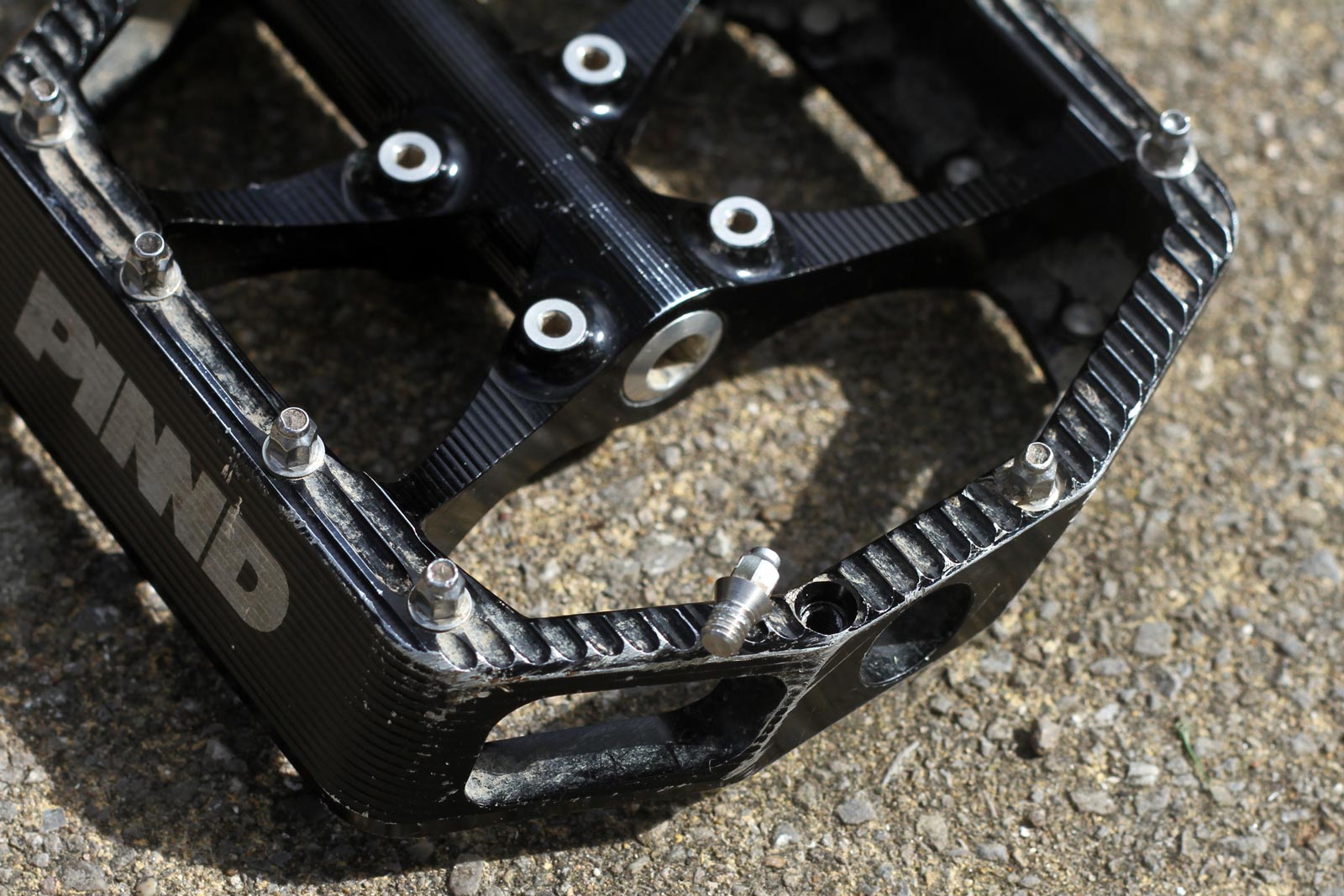
The pins on an early prototype I tested weren’t very robust, easily sheared off when hit. Since then, PINND have update the pin shape, and how they interface with the pedal body; the niche they sit within now has a conical shape leading down to the threaded portion, with the pin stem featuring a complementary cone shape. As a result, the surface area here is greater, leaving the pins stronger and more resilient to impacts.
The CS2 Pedals are still going strong, but needed a full service after developing axial play around 4-5 months into the review period. That’s 4-5 months of riding 2-3 times per week. It’s a decent service interval; certainly, a lot better than I’ve had out of Crankbrothers Stamp 3, or DMR Vault flat pedals, but at £195 I might have expected a little more.
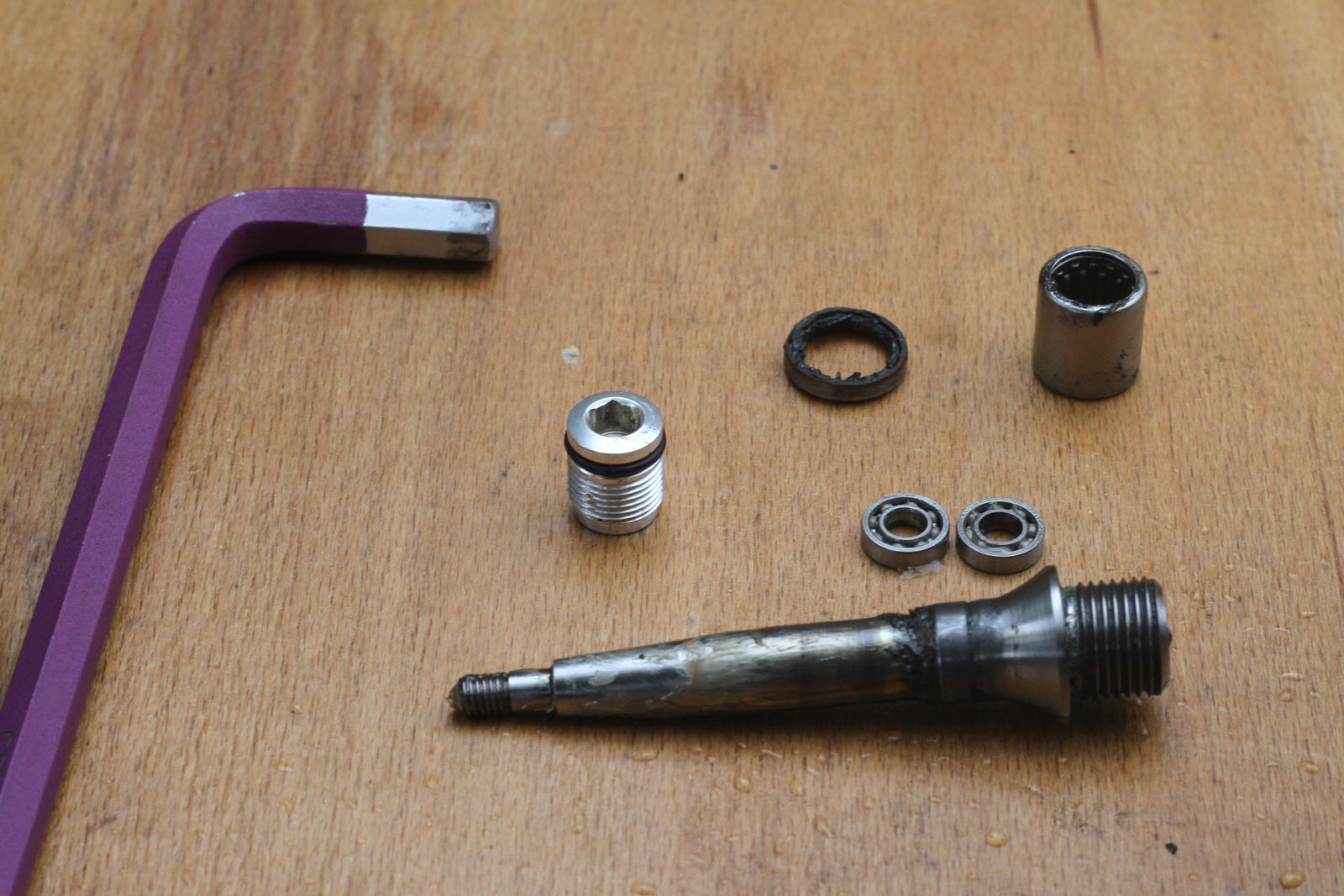
I continued to ride on the CS2 pedals for around 2-3 weeks, during which time the axial play did worsen slightly. I then completed a full service of the internals, replacing the needle bearing, two cartridge bearings and the inboard seal, repacking the whole assembly with white lithium grease in the process.

Servicing the pedals was fairly straightforward. It didn’t require any proprietary tools, but it did require use of a thin-walled 8mm socket wrench, which isn’t exactly a staple in most people’s toolbox. That said, you can get away with using a filed-down regular 8mm socket wrench, and PINND will sell you one for £5.50.
PINND CS2 Pedals in Summary
Pros:
- No rider weight limit
- Tune-able concavity makes it adaptable
- Excellent levels of grip
- Robust pins
- Fully rebuildable
- Five-year warranty
Cons:
- Very expensive
- Quite thick making for reduced ground clearance
- A bit on the heavy side
